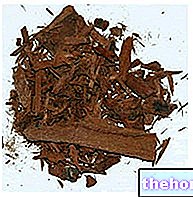What is White Flour?
White flour is a food of plant origin.
“Bianca” is a generic adjective, used to underline the candid aspect due to the scarcity of fibrous residues in the flour.

White flour belongs to the III fundamental group of foods. In fact, from a nutritional point of view, it plays the primary role of carbohydrate and energy source.
For white flour we mean the one made from soft wheat. Flour made from durum wheat is called "semolina".
Soft wheat is a herbaceous plant belonging to the Poaceae family (graminaceae), Genus Triticum, Species aestivum (binomial nomenclature Triticum aestivum).
The flour is obtained from the grinding of raw seeds and, according to the level of refining (sifting), products with different characteristics can be obtained: wholemeal flour, type 2 flour, type 1 flour, type 0 flour and type 00 flour .
The lighter flour has an impalpable consistency and is the 00 type.
The yield of soft wheat into white flour is about 70%. The remaining 30% is made up of bran, bran, germ and farinaccio.
At the end of the refining process, the following remain:
- More carbohydrates
- Less lipids, proteins, fibers, minerals (ash) and vitamins.
Consequently, white flour can be considered a food rich in "empty calories"; in fact, it brings a lot of energy (thanks to its high carbohydrate content), without providing significant quantities of micronutrients.
Some experts or alleged experts argue that this nutritional composition of white flour is partially responsible for the collective tendency to obesity and metabolic diseases.
To tell the truth, there are various types of white flours. These differ in some stages of the production mechanism and in the "strength" of the finished product (we will explain what it is later on).
Among the most characteristic phases of the production cycle we remember:
- Whitening (now disused)
- Enrichment: mainly used in the USA; it serves to replenish the food with some nutrients lost during refining (for example magnesium).
Strength of Flour and Food
White flour is a common ingredient of Western food.
It is the basis of bread-making, the production of pasta and sweet foods.
For industrial food applications, it undoubtedly boasts better physical characteristics than less purified flours, especially as regards strength.
In any case, the flours are not all the same and are produced "tailor-made" according to the intended purpose.
Strength is a physical characteristic of white flour. It mainly concerns the activation of gluten, a protein that allows dough to rise.
NB. Gluten is a nutritional element which, if taken by intolerant people, causes celiac disease.
The strength of the flour is classified with Chopin's alveograph and is expressed in a graph called the “alveogram”.
The reference parameters are the tenacity index (abscissa), the extensibility index (ordinates) and the breaking point; the unit of measurement is work (W).
Depending on the strength (from 90 to 370W), white flour is destined for different food uses (biscuits, dry pastries, bread making and special products such as panettone).
Strong flours, such as Manitoba, are ideal for bread making and in general for long leavening doughs. The weaker flours can instead be used for the production of biscuits or unleavened products
It hurts?
As anticipated, from a nutritional point of view, white flour is the subject of many controversies.
It is not clear whether the controversies have a scientific basis or are the result of a kind of "collective hysteria".
Below we will briefly summarize the possible health implications of white flour.




























